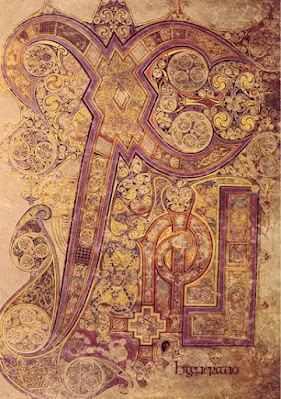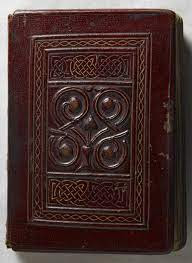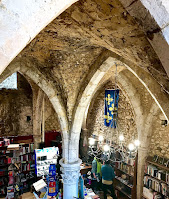His title at the peak of his career was scriptor apostolicus, "apostolic writer," a top secretary of diplomatic documents for the pope. Over 50 years he served seven popes. Working for the pope was a career, not a calling, and he never took Holy Orders, remaining a layman all his life.
His position did not pay well, but he was a smart investor and had a keen eye for valuable books and manuscripts. The sale in 1434 of a manuscript of Livy that he owned allowed him to buy a villa, which he filled with sculptures of men of antiquity.
His position gave him leisure time, especially when the Council of Constance deposed Antipope John XXIII in 1415, after which the papal seat was empty for two years. This gave Poggio time for his hobby: finding interesting antique manuscripts. It was while at the Council of Constance that he was able to explore the libraries of Swiss and Swabian abbeys. At St. Gall he discovered Cicero's defense of his friend Roscio, some Quintilian, lost Latin poetry by Statius, an epic poem on the Punic War, a long Latin poem on celestial phenomena, and Vitruvius' De Architectura, the earliest known work on architecture. At Cluny Abbey he found a collection of Cicero's Orations, and at Langres (northeastern France) he found nine unknown orations of Cicero.
He discovered copies of works by Livy and Ammianus in Hersfeld Abbey in Hesse, Germany. The abbey would not give them up, but Poggio bribed a monk to procure the manuscripts.
This blog has mentioned Lucretius' De Rerum Natura ("On the Nature of Things") before, when Poggio found the only surviving manuscript. Poggio recognized the significance of the name because he had read of it in Cicero; otherwise, he might have passed over it as inconsequential. As it turns out, that original has disappeared, but Poggio sent it to a friend to get copied (and complained that the friend never returned the original to him).
The discovery of De Rerum Natura was the subject of a 2011 book that claims it was the start of the modern world. This was a time of transition, and Poggio was part of that transition, one example of which was his rivalry with a scholar and priest called Lorenzo Valla. One more post about Poggio and this rivalry, and then I'll move on. See you next time.




























